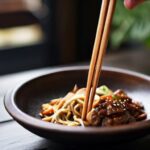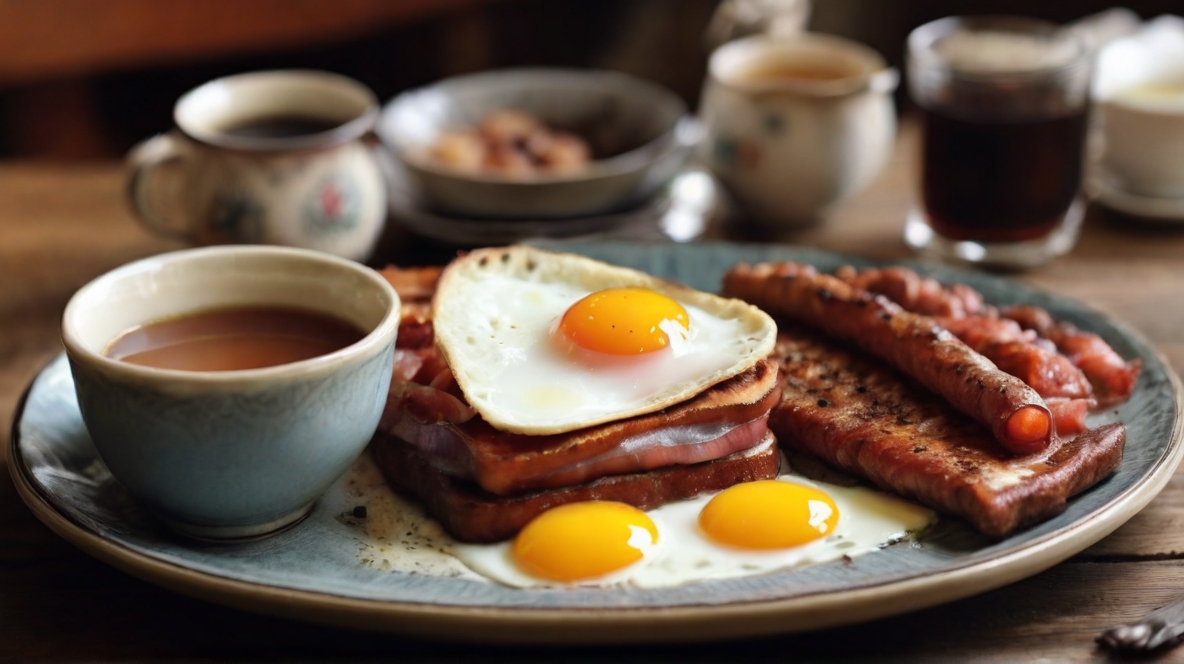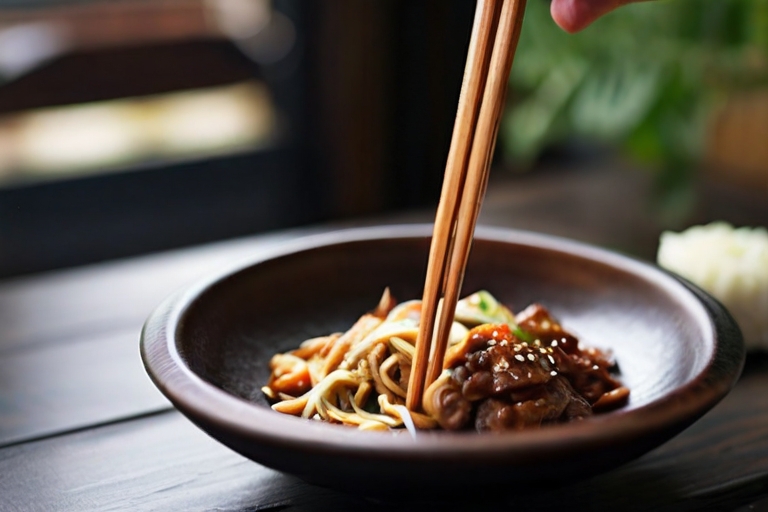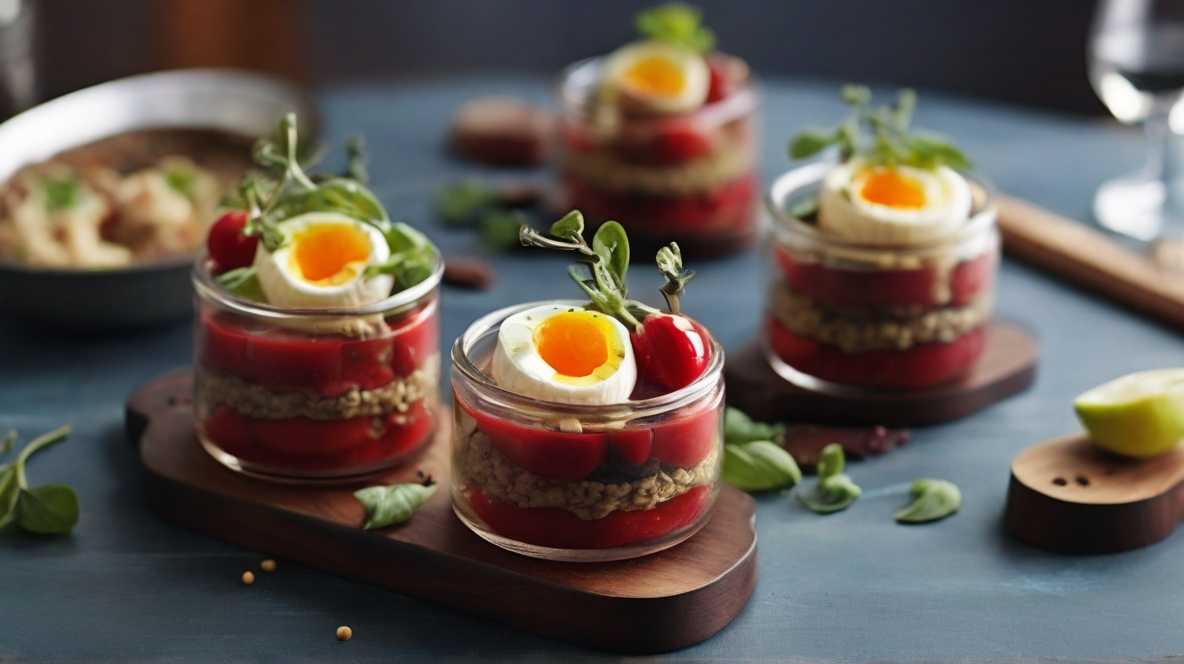The English Breakfast, often referred to as a “Full English” or “Fry-Up,” is a hearty and iconic meal that has been a beloved staple in British cuisine for generations. Comprising a delectable array of ingredients, this breakfast is a savory symphony of flavors that can satisfy even the heartiest of appetites. In this comprehensive guide, we will take you through each element of a traditional English Breakfast, sharing tips, techniques, and secrets to help you create the perfect morning feast. Whether you’re a novice in the kitchen or a seasoned cook looking to perfect your Full English, this step-by-step guide is your ticket to breakfast bliss.
Table of Contents:
- The Essence of an English Breakfast
- Understanding the Components
- Historical Significance
- Gathering Your Ingredients
- Meat: Bacon, Sausages, and More
- Eggs: The Heart of the Breakfast
- The Role of Baked Beans
- Mushrooms and Tomatoes
- Black Pudding: A Controversial Delicacy
- Toast, Fried Bread, or Hash Browns?
- Accompaniments: Butter, Ketchup, and HP Sauce
- Tools of the Trade
- Choosing the Right Cookware
- Essential Utensils
- Timing Is Everything: Kitchen Timer
- The Cooking Process
- Perfectly Crispy Bacon
- Sausage Sensations
- Eggs: Mastering the Fried and Poached Varieties
- Sauteed Mushrooms and Roasted Tomatoes
- Preparing Black Pudding
- Toasting Techniques
- Hash Browns: Homemade or Store-Bought?
- Keeping It Warm: Oven or Plate Warmer
- Presentation and Plating
- Creating an Aesthetically Pleasing Breakfast
- Serving Suggestions
- A Dash of Freshness: Adding Herbs and Greens
- The Perfect Drink Pairing
- Variations and Dietary Considerations
- Vegetarian and Vegan Options
- Healthier Alternatives
- Regional Variations in the UK
- Tips for Success
- Timing and Coordination
- Temperature Control
- Mise en Place: Preparing in Advance
- Managing Portion Sizes
- Enjoying Your English Breakfast
- Savoring the Flavors
- Breakfast Etiquette
- Sharing the Experience with Others
- Conclusion
- Mastering the Art of the English Breakfast
1. The Essence of an English Breakfast: Understanding the Components
The English Breakfast is a hearty morning meal that typically consists of a variety of components, each contributing its unique flavor and texture to the overall experience. While there can be variations, a traditional Full English includes bacon, sausages, eggs, baked beans, mushrooms, tomatoes, black pudding, toast, and accompaniments like butter, ketchup, or HP Sauce. This culinary masterpiece is known for its satisfying and savory qualities, making it a favorite choice for breakfast enthusiasts and those seeking a substantial start to the day.
Historical Significance: The origins of the English Breakfast can be traced back to the early 19th century when it gained popularity among the British aristocracy. It was originally conceived as a substantial meal to provide energy for a long day ahead, often including hunting or other outdoor activities. Over time, it became a beloved tradition and is now enjoyed by people of all backgrounds and walks of life.
2. Gathering Your Ingredients:
To embark on your journey to creating the perfect English Breakfast, it’s crucial to gather the highest quality ingredients. Each component plays a vital role in achieving the authentic flavors and textures of this iconic meal.
Meat: Bacon, Sausages, and More: Bacon and sausages are the cornerstone of any Full English. When selecting bacon, you’ll encounter various types, including back bacon and streaky bacon. Back bacon is leaner and typically preferred for an English Breakfast due to its meaty, savory flavor. Streaky bacon has a higher fat content and is more commonly used in sandwiches or for wrapping other ingredients.
When it comes to sausages, you can opt for traditional pork sausages, Cumberland sausages, or other regional varieties. Pork sausages offer a classic taste, while Cumberland sausages come with a unique blend of spices and herbs. Experimenting with different types of sausages can add a delightful twist to your breakfast.
Eggs: The Heart of the Breakfast: Eggs are a central element of the English Breakfast, and they can be prepared in various ways to suit your preference. Fried eggs with runny yolks are a classic choice, but poached eggs are equally popular. The choice between sunny-side-up or over-easy is a matter of personal taste. To achieve that perfect yolk consistency, timing is key, and we’ll explore the techniques in detail later in this guide.
The Role of Baked Beans: Baked beans are a unique addition to the English Breakfast and contribute a comforting, sweet-and-savory element. The most common choice is canned baked beans in tomato sauce. However, some cooks prefer making their baked beans from scratch for a homemade touch. We’ll discuss both options in this guide.
Mushrooms and Tomatoes: Mushrooms and tomatoes add a delightful contrast to the rich and savory elements of the breakfast. Sautéed mushrooms provide an earthy, umami flavor, while roasted tomatoes offer a slightly sweet and tangy note. You can choose between white or chestnut mushrooms and plum or vine-ripened tomatoes, depending on your taste preferences.
Black Pudding: A Controversial Delicacy: Black pudding, often considered a love-it-or-hate-it component of the English Breakfast, is a type of blood sausage made from pork blood and a mixture of oats or barley. It has a unique and robust flavor that can be an acquired taste. If you’re feeling adventurous, give it a try, but feel free to omit it if it’s not to your liking.
Toast, Fried Bread, or Hash Browns?: Accompanying the main components of the breakfast, you have options for the carbohydrate element. Toasted bread is a classic choice and is often served with butter or preserves. Alternatively, you can opt for fried bread, which is bread slices cooked in the remaining fat from bacon or sausages for an extra indulgent touch. Another popular choice is hash browns, crispy and golden potato patties that add a delightful crunch to the meal.
Accompaniments: Butter, Ketchup, and HP Sauce: To complete your English Breakfast, consider including accompaniments like buttered toast, ketchup, or HP Sauce (brown sauce). These condiments add additional layers of flavor and can be enjoyed in various combinations.
In the following sections of this guide, we will delve into the specific techniques for preparing each component of the English Breakfast, ensuring that you have the knowledge and skills to create a meal that is nothing short of extraordinary.
3. Tools of the Trade: Choosing the Right Cookware
Creating the perfect English Breakfast requires the right cookware and utensils to ensure that each component is prepared to perfection. Here’s a list of essential tools you’ll need for a successful cooking experience:
Frying Pan: A good-quality frying pan is essential for cooking bacon, sausages, eggs, and mushrooms. Opt for a non-stick pan to prevent sticking and make cleanup easier.
Saucepan: You’ll need a saucepan for heating and simmering baked beans. Choose one with a lid for even cooking.
Grill or Oven: If you’re making roasted tomatoes or want to keep certain components warm while you cook others, an oven or grill is handy.
Toaster or Grill Pan: For toasting bread, you can use a traditional toaster or a grill pan if you prefer a grilled texture.
Spatula: A spatula is indispensable for flipping fried eggs and ensuring they don’t break. A slotted spatula is ideal for draining excess oil.
Tongs: Tongs come in handy for handling sausages, bacon, and other items in the hot frying pan.
Egg Rings: If you want perfectly round fried eggs, egg rings can help you achieve that professional look.
Knife and Chopping Board: You’ll need these for slicing mushrooms, tomatoes, and any other ingredients that require chopping.
Kitchen Timer: Accurate timing is crucial for achieving the desired texture and doneness of various components. A kitchen timer can help you keep track of cooking times.
Plates and Serving Dishes: Ensure you have enough plates and serving dishes to plate your English Breakfast in an appealing and organized manner.
Cutlery: Forks, knives, and spoons for serving and enjoying your meal.
Now that you have the essential tools in your culinary arsenal, let’s dive into the cooking process and explore the techniques for preparing each component of the English Breakfast.










One thought on “How To Make Full English Breakfast: A Step-by-Step Guide”